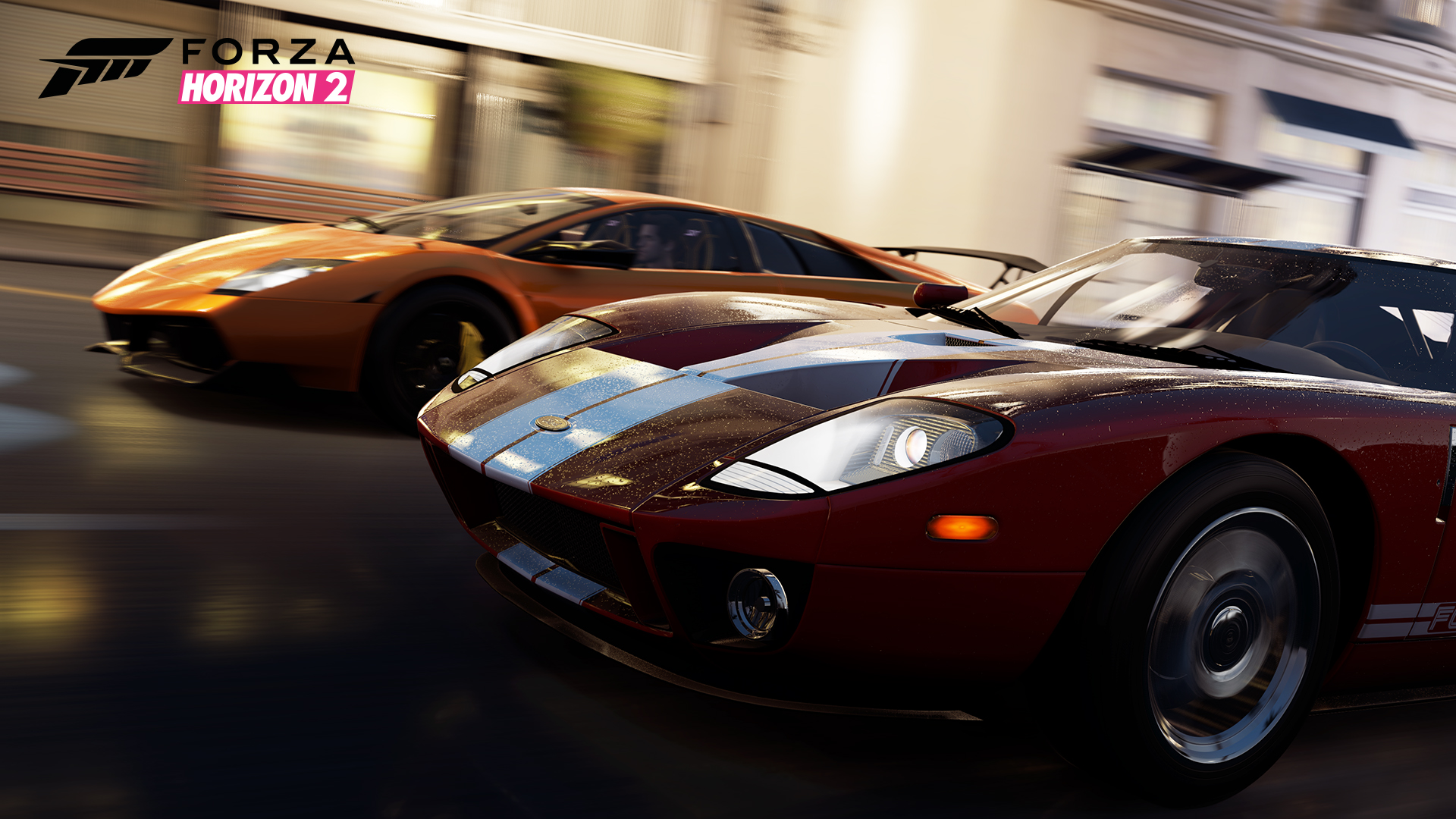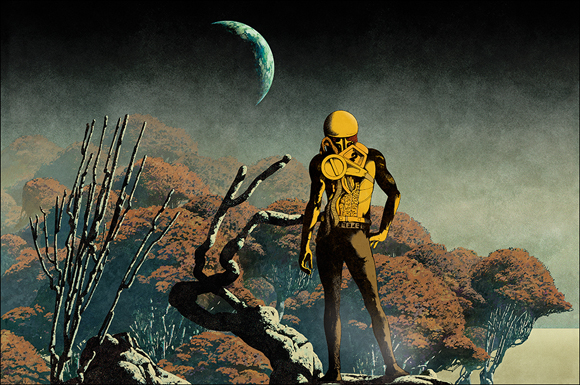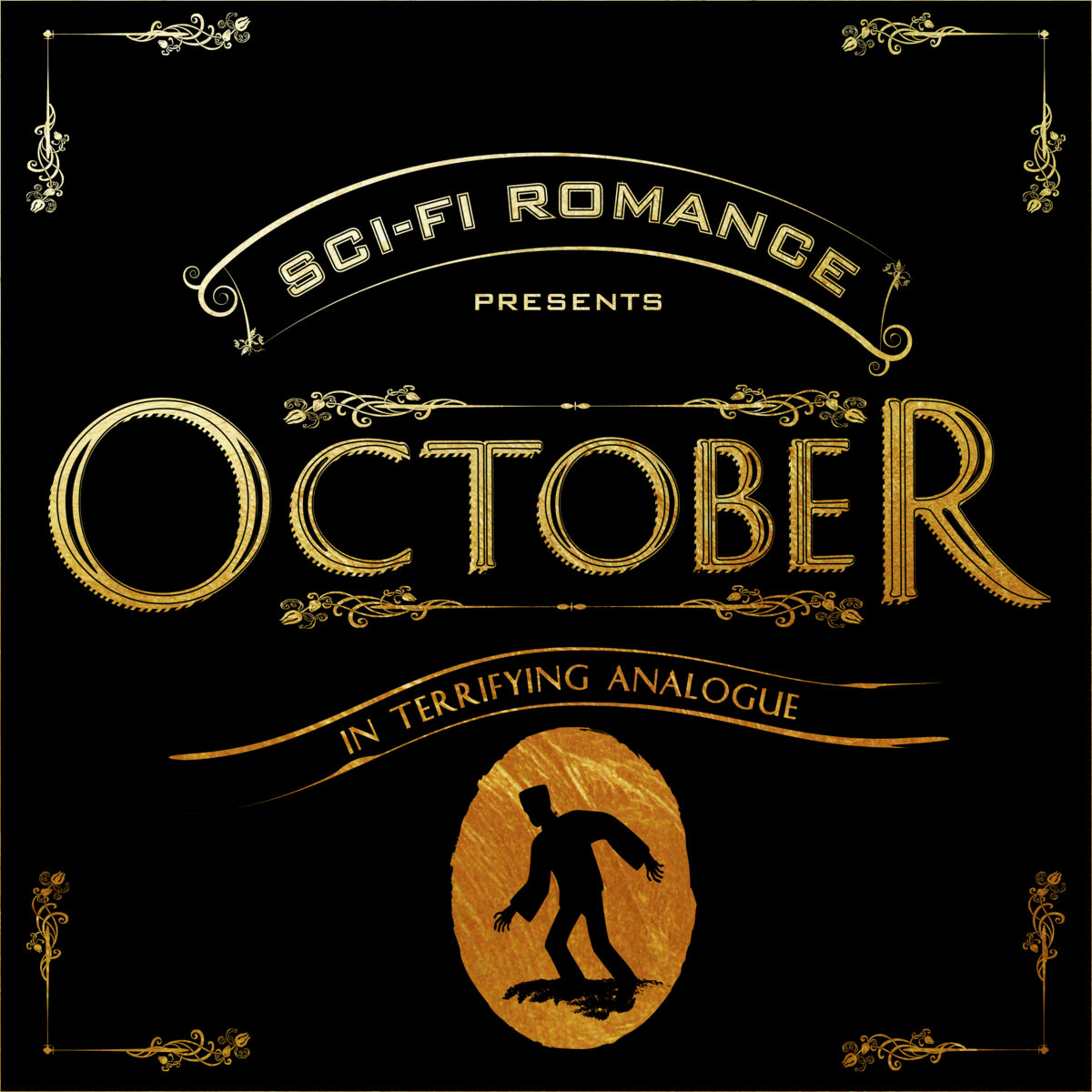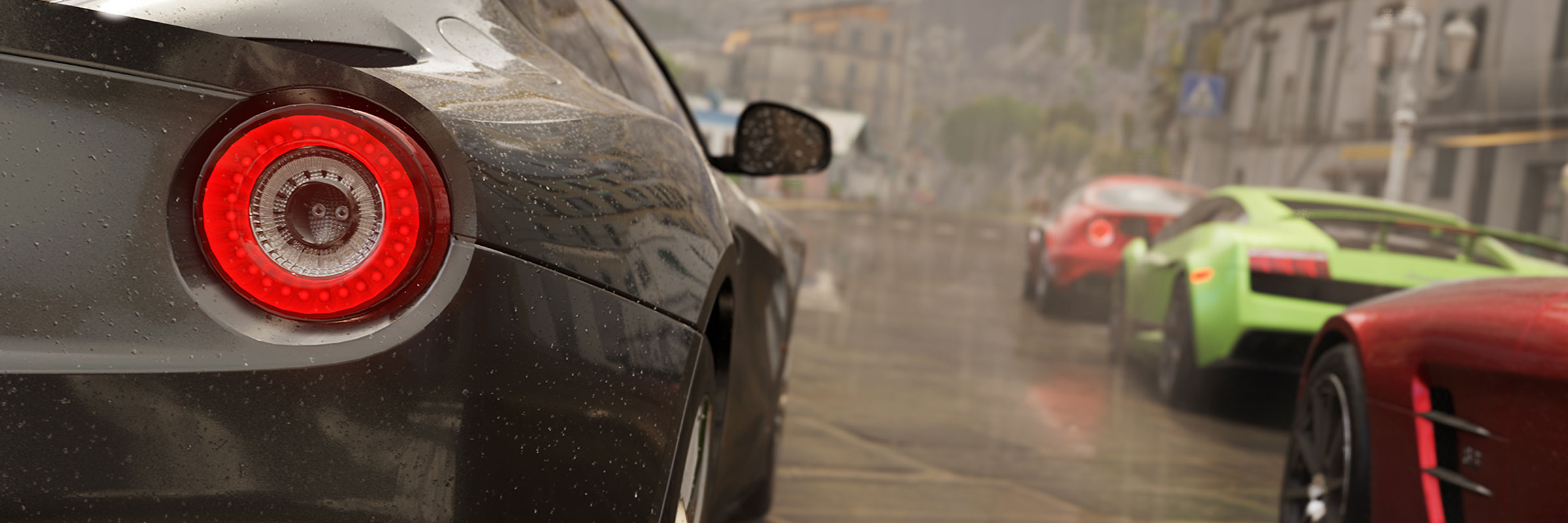[Forza Horizon 2, Turn 10 Studios, Microsoft Studios, 2014]
Why so serious?
Sony and Microsoft treat their respective flagship racing franchises with extreme stern-faced rigidity. They aren't racing games, they're racing simulators. They take the actual cars into sound studios and record their engine noise. They re-create authentic race tracks from around the world. They're so photorealistic that you often can't tell the game from a NASCAR broadcast. They allow extensive customization of your cars, to an annoying point in Gran Turismo in my humble opinion, but I'm not much of a gearhead. If I were more into that sort of thing, I have no doubt I would prefer it to Forza Motorsport. But I take my car to Jiffy Lube to get the oil changed and I couldn't tell a header from a heater coil, so I prefer Forza's more simplified upgrade system.

Forza Horizon 2, although it is a top-notch driving simulator, takes a more fun-loving approach to the driving game genre. There are a multitude of game modes that all take place in an open-world environment set in France and Italy. You can choose to take part in them by marking their location on a map and your GPS will guide you to the location. Then you actually have to make the drive there, unlike most racing games where you just start at the track. There are also several bonus activities that Turn 10 added to the game to make the open-world experience more engrossing.
Gameplay types
Horizon Solo
The Horizon Solo portion of the game will be the most familiar to race game fans as it contains the traditional single player race mode. However, it also has some new welcome additions that make this game unique. The Solo game type options are as follows.
Race
This mode will be the most familiar to Forza fans. It acts just like Forza Motorsport races with a few important deviations. First and foremost, as mentioned above, you have to drive to the races. You aren't just magically transported to the starting line. Once you arrive at the race's starting point, you are prompted to hit 'X' in order to begin. The other way it differentiates itself from the franchise's big brother is the Rally and Off-Road Races. Not only does this game offer you the chance to take a Subaru WTX STI tearing through the vineyards of France's wine country or a Cadillac Escalade shredding underbrush in the Italian countryside, but many of the races required you to take your pristine Bugatti Veyron slipping and sliding down asphalt backroads. Although purists may consider that a sin, I found it was a refreshing change of pace, if a little difficult to control.
Showcase
There were Showcase Events that began automatically after you completed a regular Race Event. In these creative additions, you had to race alternative forms of transportation. These included a Jet, a high-speed train, hot air balloons, a troop transport plane, and a crop-duster. These were, by far, the closest races in which I took part. I was able, for the most part, to win the regular Race Events handily. I only managed to beat the train by 0.15 seconds. The Showcase Events were highly enjoyable and yet another example of Turn 10's creative, outside-the-box thinking when it came to creating this multi-layered title.
Bucket List
The Bucket List was one of my favorite additions to the Forza franchise. In Forza Motorsport, if you wanted to drive a McLaren P1, you had to save up over a million credits and purchase it yourself. With the Bucket List, you were able to drive many of the game's most desirable automobiles for free. There were Bucket List challenges spotting the map all over the place. They contained challenges like catching big air, driving through the woods at night, time trials, and barely missing oncoming traffic, all while in some of the cars dreams are made of.
Bonus Boards
Placed all over the map are boards like the one seen above. They offer the player one of two things, either an XP bonus or travel discounts. The XP bonus boards are pretty self-explanatory. They give you XP, period. You just have to track them down and run them over. The travel discount boards lower the cost for the player to fast travel. Rather than driving halfway across the map to begin an event, you are often given the choice to fast travel there. However, it comes at a price, often between 8,000 and 10,000 credits. Depending on your bank account this can be worth it to save time or it can be too expensive for your taste and not worth the savings in time. I rarely used fast travel, but it was worth it on occasion to save myself a ten minute drive just to do a race that only paid 5,000 credits.
Online Multiplayer
There were fewer options when it came to the online multiplayer, but it was still a (mostly) enjoyable break from the ordinary racing game experience. Top 10 and Microsoft still have a few bugs to work out when it comes to the multiplayer modes, but I'll get to that a bit later.
Car Meet
When you boot up FH2, you are immediately taken to a Car Meet. These are locations all over the map where you can challenge others to head-to-head races. You can examine other players' rides, check out their stats, and pick one to take down. It is a convenient and well-constructed way to find other players interested in online one-on-one competition. The one downside I found, usually for the person in the other car, is that it didn't match you based on the level of your car. I was able to take on a level B Corvette with my level S2 Lamborghini. I loved it, but I suspect the other player didn't have such a good time when I blew past him like he was standing still.
Road Trip

Road Trip is basically just like the single player races, but instead of going up against AI Drivatars, you're racing real players. Groups of up to 12 real players are pitted against one another in the same races in which you can participate in single player mode. I found this not only offered much more of a challenge than the Drivatars, but it also brought on a seriously heightened number of crashes and paint trading. Where the Drivatars went out of their way to avoid hitting you most of the time, real people aren't so careful.
Free Roam
I honestly didn't really get the purpose of Free Roam. The only difference I could tell between it and the Horizon Solo mode is that there were actual players roaming the streets instead of Drivatars. Both offer the ability to join Road Trip activities, but Free Roam didn't contain the races, only Road Trip and the bonus boards. Since you could also enter the Road Trip races from single player mode, as well as drive freely around the map without taking part in any formal activities, this game mode seemed mostly redundant and extemporaneous to me. Maybe I missed something, but that was my personal experience when I tried it.
There were some...issues

Unfortunately, there were several glitches that popped up while I was playing the game, and nearly all of them had to do with the multiplayer side of the FH2 coin. The one problem that occurred during single player mode was that paint jobs failed to actually stick to the car. In one instance, my Lamborghini Huracan LP 610-4 refused to change paint jobs in the menus. No matter what design I added to it, the car remained in its black-and-orange paint. In the game itself, the changes I entered showed up just fine, so it was a very minor glitch. So minor, in fact, that I almost didn't mention it. However, this is a report on the issues I had with the game so I decided to put in everything from the mundane to the major. I also had an Acura NSX that refused to change color. In the garage, I changed it from the original white to a reflective blue chrome, but when I took it out of the garage to use it, the car was as white as the driven snow. A simple system reboot fixed the issue and I eventually got my sapphire-tinted Acura, but not until I had tried to make the change at least three times without success.

A slightly more annoying glitch was opponents' cars tendency to seemingly hop around magically by a couple of feet to either side.in Online Road Trip. It reminded me of the animation from Max Headroom. For you readers under 30, you're going to have to ask your parents about that reference. It was a decent commercial by 1980s standards that inconceivably became a sensation and spawned a horrifically bad TV show. I thought I could be having issues with my Internet, but I ran Speedtest on it and came up with 23 Mps download speeds so the problem wasn't on my end. Although it didn't really effect the gameplay as my opponents weren't gaining any sort of advantage by the glitch, it really effected the overall experience by drawing my focus away from the race and placing it on those magic dancing automobiles.

The real problem I had with the game was the lag. It was significant in many of my multiplayer matches. All motion stops, then you teleport forward 20 feet into a tree. The game seems to pause itself just long enough for you to fly off the road and out of contention for first place. I even saw lag on a load screen a couple of times. The view was panning across a panoramic scene of a French vineyard when it briefly stopped, then picked up again a few feet further to the left. While the lag didn't make the game unplayable like others I've seen, it was pretty annoying when it happened. That said, I'm not the world's biggest online multiplayer gamer and the solo campaign is fun enough by itself to justify purchasing this game. I'm simply reporting my experience, both the multitude of good stuff and the anger-inducing tidbits. I'm just a humble game critic, here mostly to entertain and hopefully enlighten just a smidge, if possible. I guess my point is that you shouldn't forego FH2 because of the minor flaws, which don't ruin the overall experience and could be patched in the near future.
soundtrack
The plethora of music in this game is fantastic, rivaled only by Grand Theft Auto and its seemingly endless options when it came to radio stations. The game contains nearly 150 different tracks spread out over seven widely varied radio stations, each with its own theme. The tracks were chosen by UK DJ Rob da Bank, host of multiple shows over the years on the BBC's Radio 1. The stations are as follows:
- Pulse - Laid back pop, nu-disco, and electronica
- Bass Arena - House, electro, and techno
- XS - Indie and alternative rock
- Hospital Records Radio - Drum and bass
- Innovative Leisure Radio - Music from the LA-based indie label
- Ninja Tune Radio - Tracks from the legendary trip-hop/acid jazz record label
- Radio Levante - Classical music's greatest hits
Although I take issue with Bass Arena's definition of its tracks as electro and techno (I'm somewhat of an underground purist when it comes to these genres), I generally enjoyed the melange of options the game provides. There's nothing quite as exhilarating as going neck-and-neck into the finish line while the 1812 Overture is blaring through your speakers.
The last lap

I had tons of fun playing this game. It was refreshing to experience a racing game that didn't have delusions of grandeur and act like it was an Air Force flight simulator that was vital to national security because it was necessary to train our fighter pilots for the country's defense, yet didn't stoop to Burnout levels of ludicrousness to entertain. Horizon 2 has all the real-world physics and true-to-life driving replication of its stern-faced older brother, Forza Motorsport, but it also has the guts to take some chances outside the box and, glitches aside, it definitely worked out for the best. In fact, in one way I found it to be even more realistic than Forza 5. The open-world design allows the player to drive off of the track into dirt, grass, or asphalt and the terrain acts like it would if you did the same in an actual car. Forza 5 limited you to driving on-track at all costs, reality be damned. They took it to the extreme in that if you strayed from the path, albeit onto concrete or dirt/grass, the cars reacted as if you had just pulled into a foot-deep pool of wet concrete and slowed to a 15 mph crawl. I found that unnecessary penalization to be more intrusive into my fantasy of being Emerson Fittipaldi behind the wheel of a Formula 1 beast than the few glitches present in Horizon 2. All-in-all, if you are looking for a racer that is built purely to put a huge smile on your face without delving into the realm of the ridiculous, then Forza Horizon 2 is just what you've been waiting for.

the math
Objective Score: 8/10
Bonuses: +1 for having the chutzpah to try so many different things.
Penalties: -1 for the glitches. None of them were bad enough to ruin the game, but I've come to expect perfection when it comes to the Forza franchise and they usually deliver. Here the issues occurred often enough to taint my overall impression of the game, if only slightly.
Nerd Coefficient: 8/10. Well worth your time and attention.




.jpeg)









































